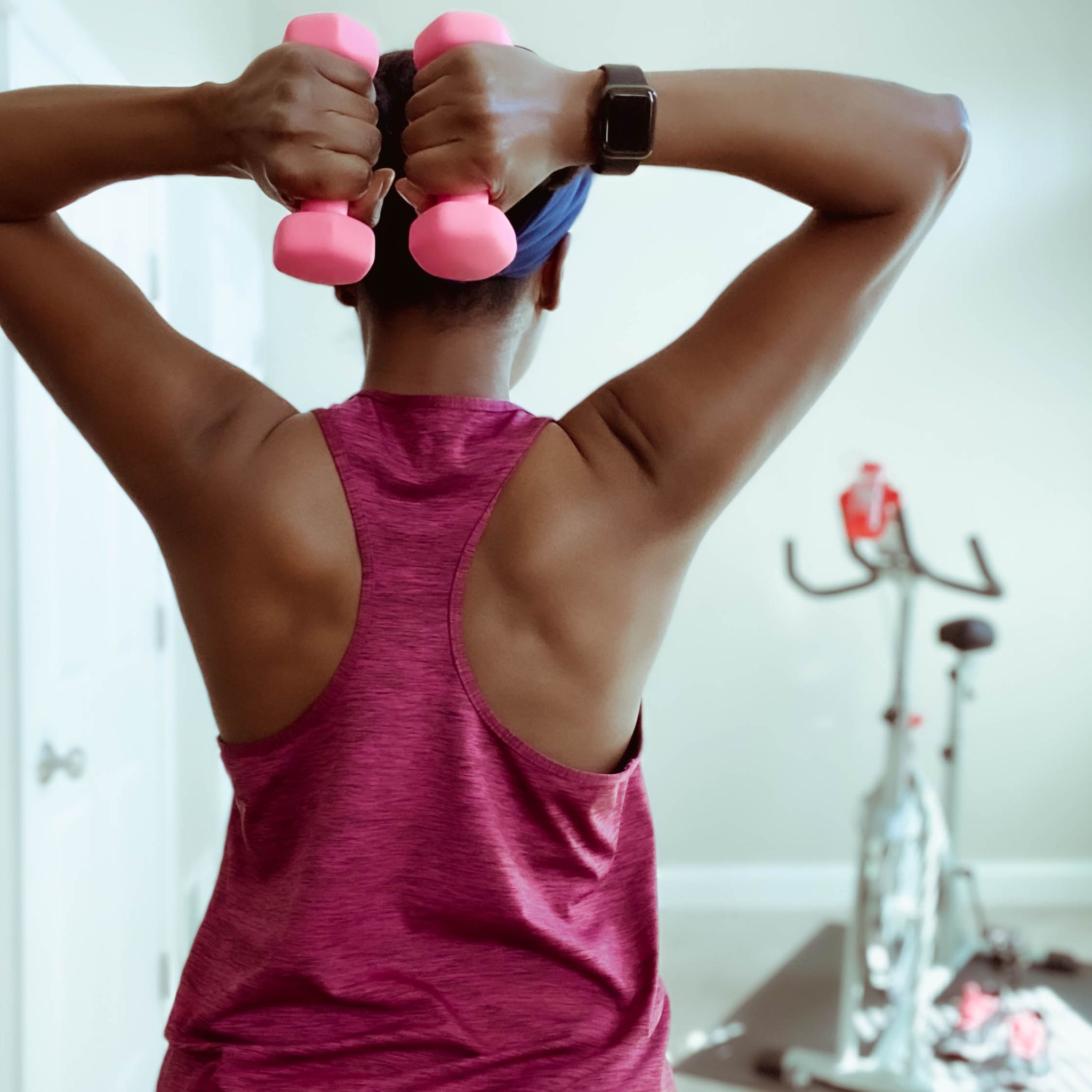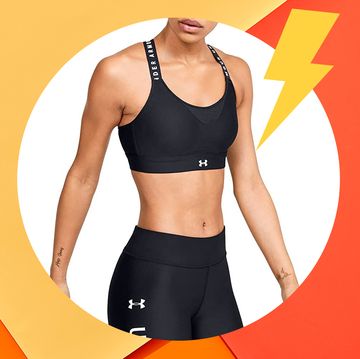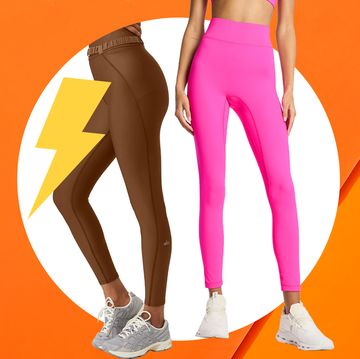Ah, the great cardio before or after weight training debate. You might prefer one workout style over the other—and, TBH, it could flip flop over time—but you’ll definitely want to do both every week to get max health benefits. The good news is that you can totally combine them into a single, efficient workout, like a kettlebell session or slam ball workout, or opt for two-a-day workouts to fit both in (as long as you do so safely).
So, what’s better—cardio before or after weights? The answer depends on your fitness goals. Maybe you’re aiming to make your heart and lungs healthier, or perhaps you’re more interested in weight loss or weight management. Your priorities will determine your workout sequence, as well as how often you should be doing cardio or lifting weights.
Meet the experts: Sarah Merrill, MD, is a primary care and sports medicine physician at UC San Diego Health. Eric Bowling, CPT, is a personal trainer at Ultimate Performance in Los Angeles.
Here's how to decide whether to do cardio before or after weights based on common fitness goals.
The advice below is recommended by the American Council on Exercise.
- If your goal is better endurance, do cardio before weights.
- If your goal is burning fat and losing weight, do cardio after weights.
- If you want to get stronger, do cardio after weights.
- On upper-body strength training days, you can do either first.
- On lower-body strength training days, do cardio after weights.
- If your goal is just general fitness, do either first, but maybe start with the one you like less.
Now that you’ve got some basic tips, read on for all the deets about combining cardio and weight training and when experts say you should do them for max benefits.
How often should you do cardio and weight training?
“The U.S. Department of Health and Human Services recommends adults have at least 150 minutes of moderate intensity cardio or 75 minutes of vigorous intensity cardio a week, and strength training at least twice a week,” says Sarah Merrill, MD, a primary care and sports medicine physician at UC San Diego Health. But how you break that down depends on your goals—and your schedule.
Some experts make the case for an additional day of strength work: “Ideally, I suggest weight training three times per week, as this frequency has been shown to be an effective strategy when it comes to muscle building and fat loss,” says Eric Bowling, CPT, a personal trainer at Ultimate Performance in Los Angeles. “Cardio can be done every day if it’s low-intensity; the higher the intensity, the less frequently you can perform it.”
So, picking one cardio option, your weekly schedule might look something like this:
- Weight training: 2–4 times per week
- Low-intensity cardio: 5–7 times per week
- Moderate-intensity cardio: 3–4 times per week
- High-intensity cardio: 1–3 times per week
How long those cardio workouts last also depends on your goals. If you're seeking strength improvements, then you may want to limit your cardio to a 10- to 15-minute session to warm up your muscles, says Mandeep Ghuman, MD, director of Dignity Health Medical Group's Sports Medicine Program in Northridge, California. “If your goal is overall fitness and health then there is no real limit, except your physical and schedule limitations.” Just keep those recommended weekly exercise guidelines in mind so you don’t overtrain.
Can you do cardio and weights on the same day?
Traditional workout guidance suggests people alternate their workouts—cardio one day, followed by weight training the next, or vice versa. But “there’s no reason you can’t do both in the same workout session, or split into two sessions on the same day,” Dr. Ghuman says.
Take high-intensity workouts like an at-home tabata or Barry’s Bootcamp session, which combine strength and cardiovascular training to deliver results in a shorter time. Doing that type of workout doesn’t negatively affect you on any physiological level, according to a study published in The Journal of Strength and Conditioning Research—and it may be a much more efficient use of your limited time.
Here's a high-intensity workout you can try at home:
If you are going to do two separate workout sessions in one day, just make sure to leave enough time in between for your body to recover—around eight hours between high-intensity cardio and lifting weights, Bowling says. Your body doesn’t physiologically adapt (i.e. get stronger, faster, develop more endurance) until after a workout, so continually stressing it with exercise will actually hinder your progress.
What’s the best type of cardio to combine with weight training?
Weight training is anaerobic exercise—basically, short bursts of high-intensity effort that are fueled by glucose, not by oxygen. Bowling says low-intensity cardio (which is fueled by oxygen consumption) is the best type of cardio to pair with weight training.
Any low-intensity aerobic activity—whether that’s swimming, using the elliptical machine, rowing, walking, jogging, or cycling—would work. The most important thing is to choose a kind of cardio you truly enjoy. “You’ll be more consistent with your workouts, which will make them more effective, if you’re enjoying the exercise,” Dr. Merrill says. “And it’s important to give your body some variety; always doing the same cardio or weight lifting regimen can cause fatigue or overuse syndromes in muscles and joints.”
How To Combine Cardio And Weight Training For Your Fitness Goals
Do cardio after weight training if you’re looking to build strength.
The reason is pretty simple: Lifting is hard, and you need all the energy (physically and mentally) that you can get to move loads with proper form and technique and avoid injury.
“If you prioritize weight lifting over cardio, you can focus more brain power on lifting those weights correctly versus going into a session sweaty and out of breath, unable to perform as well and upping your risk due to fatigue,” Bowling explains.
The science backs him up: When researchers compared three workout protocols—strength training alone, running followed by strength, and cycling followed by strength—they found that running or cycling pre-strength workout limited the number of weight lifting reps participants could perform compared to strength training without hitting a treadmill or exercise bike beforehand. The results were published in The Journal of Strength and Conditioning Research (JSCR).
What's more: Muscle power decreased when lifting weights after running on a treadmill, while heart rate and the rate of perceived exertion, or how hard the workout felt, increased, according to a separate JSCR study.
Do cardio after weights if your main goal is weight loss.
Doing cardio after weight training burned more fat during the first 15 minutes of that cardio workout versus starting with cardio and then lifting, according to a study published in Medicine & Science in Sports & Exercise.
And if you're focused on a specific heart health goal, you'll definitely want to do both as cardio is notoriously great for your ticker. Still, compared to aerobic exercise, resistance training was found more likely to reduce a type of heart fat that has been linked to cardiovascular disease, according to a 2019 JAMA Cardiology study.
Key term: EPOC, or excess post-exercise oxygen consumption, refers to the higher level of oxygen your body consumes (and the calories it burns) to help you recover from your workout. Anaerobic workouts, which use fast-twitch muscles, are better at stimulating EPOC, WH reported.
But there's nothing wrong with doing cardio before weight training, especially if you're just generally trying to stay fit.
Revving your heart rate is a great way to prep your body for movement, so you may want to start your workout with a cardio warm-up (like jump rope) even if you are prioritizing weight training.
“Doing light cardio such as jogging or biking can prepare the muscles for the physical work of lifting weights and can increase blood flow to the large muscle groups you’ll be using,” Dr. Merrill explains.
You should aim to add 10 minutes of low-impact cardio to your warm-up, according to the National Academy of Sports Medicine (NASM).
Do cardio before weights if your main goal is to improve your cardiovascular endurance.
The same logic that says you should prioritize weight training if you’re looking to build strength applies here, too. “Doing a heavy weight day before doing cardio may fatigue the muscles, causing you to lose proper form while you are doing cardio and increase the risk of injury,” Dr. Merrill says.
If you’re training for a race, doing weights before cardio could actually decrease your endurance. When a group of people performed strength training prior to running, they showed greater running impairment compared to the group that ran first, according to a study published in the journal Applied Physiology Nutrition and Metabolism.
Bottom line: Strength training and cardio should both make it into your workout routine, and you can do them both in a single session. Your fitness goals help you decide whether to do cardio before or after weights.

Alexis Jones is an assistant editor at Women's Health where she writes across several verticals on WomensHealthmag.com, including life, health, sex and love, relationships and fitness, while also contributing to the print magazine. She has a master’s degree in journalism from Syracuse University, lives in Brooklyn, and proudly detests avocados.













